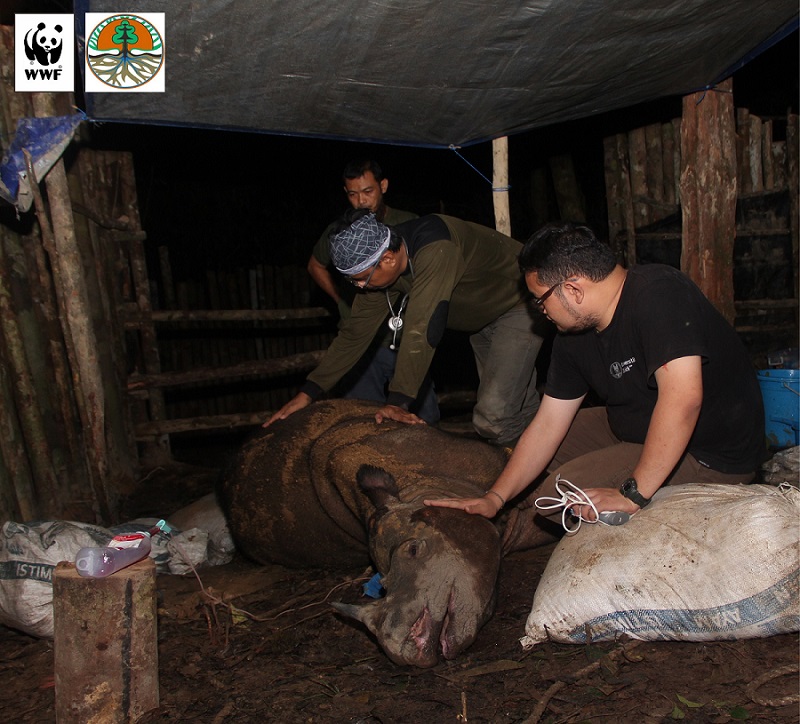- Fewer than 100 Sumatran rhinos (Dicerorhinus sumatrensis) are believed to exist in the wild.
- Until 2013, the species was thought to have been extinct in Indonesian Borneo, but scientists have since confirmed the existence of 15 of the critically endangered creatures.
- On Tuesday, though, one of the newly discovered rhinos passed away despite veterinarians’ efforts to save her.
One of the newly discovered Sumatran rhinos in Kalimantan, the Indonesian part of Borneo, died on Tuesday from a leg infection after being wounded by a snare.
The critically endangered species was long thought to be extinct in Kalimantan – until 2013, when scientists discovered evidence of its existence in the wilds of West Kutai. They eventually came to believe that at least 15 rhinos inhabited the forest there.
Last October, hidden cameras spotted one rhino, Najaq, with an injury in her left hind leg. She had apparently wandered into a cable trap, and part of the snare had lodged inside her.
Researchers tried for months to catch Najaq, thought to be 4 or 5 years old, in order to treat her wound. Finally on March 12, they succeeded, capturing her in a pit trap. The snare was still stuck in her leg.
Veterinarians attempted to rehabilitate the rhino, and for a while her condition improved, along with her appetite. But recently Najaq began to deteriorate, and on Tuesday she perished.

Like much of Indonesia’s incredible biodiversity, the Sumatran rhinoceros (Dicerorhinus sumatrensis) is being driven to extinction by the destruction of its habitat, as agribusiness and mining booms eat away at the archipelago’s vast rainforests. Fewer than 100 of the creatures are thought to remain in the wild.
The rhino, too, is sought after by poachers for its horns, which are sold on the black market for their purported health benefits.

Efransjah, the CEO of the World Wildlife Fund Indonesia, said Najaq’s death was a reminder that saving the species would not be easy. “We need the support of experts and intensive resources,” he said.
The International Rhino Foundation said it hoped the next rhino captured in Kalimantan would be sent to the Sumatran Rhino Sanctuary on the island of Sumatra, where it could be cared for in a permanent facility.
“Most importantly, we hope that the next rhino captured will be part of the much-needed Sumatran rhino metapopulation management strategy, while concurrent surveys are conducted to accurately determine the population in Kalimantan and appropriate long-term plans made,” the foundation wrote on its Facebook page.
The effort to save Najaq was global in scope, with conservationists from Australian zoos and Cornell University in the U.S. weighing in. On the ground it was handled by the West Kutai Sumatran Rhino Rescue Team, formed by the forestry ministry last year and consisting of academics and NGO representatives as well as government officials.
Tachrir Fathoni, the forestry ministry’s head of ecosystem conservation, said his institution would “continue to safeguard the Sumatran rhino in West Kutai.” Haerudin Sadjudin, an expert with the Indonesia Rhino Foundation (YABI), said Najaq’s death would not discourage the rescue team from continuing in its work.
*A previous version of this article described the snare as belonging to a poacher, but that is not necessarily the case.